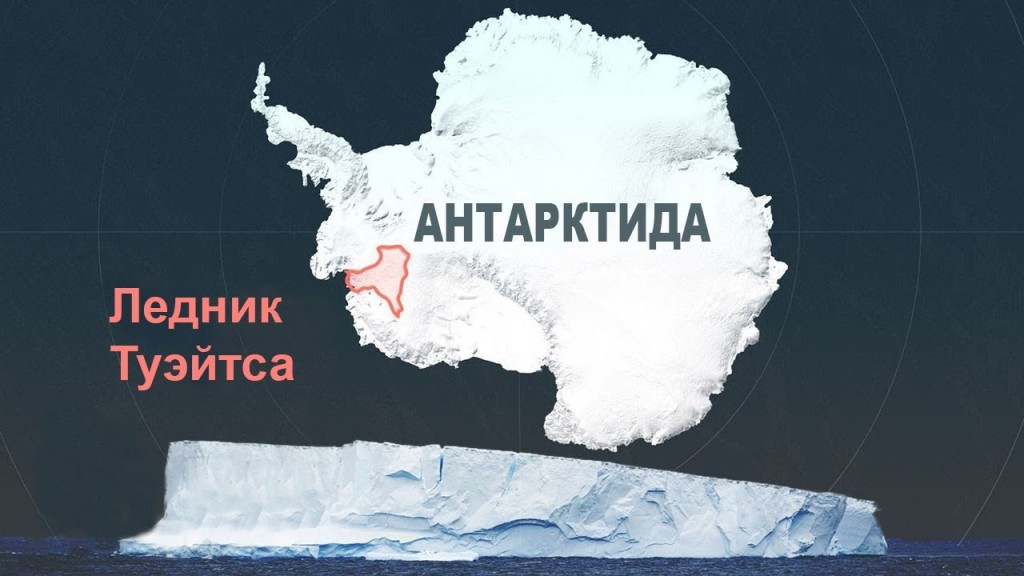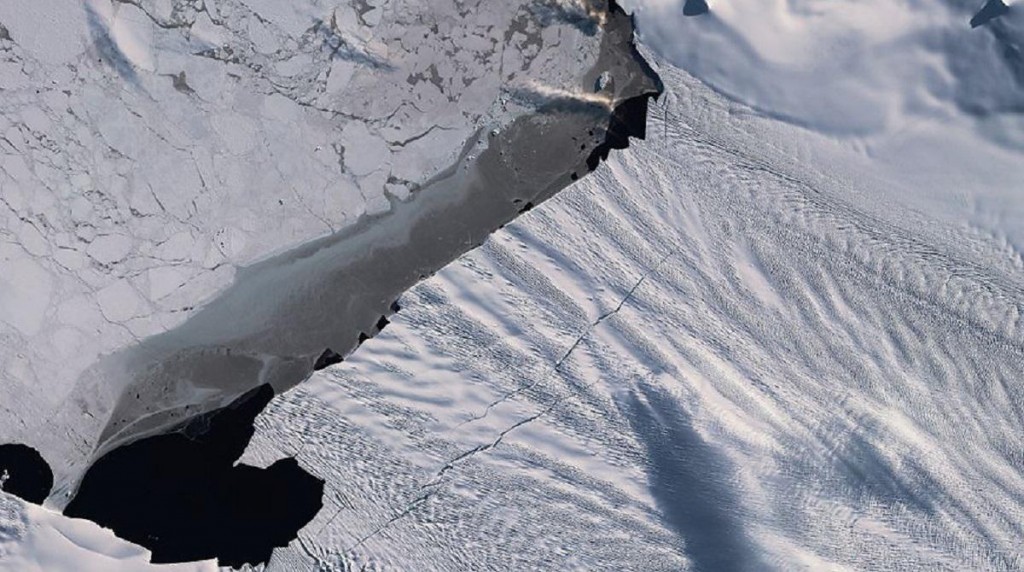December 17, 2021
Five years to Doomsday: the destruction of Antarctica’s glaciers is going at an alarming rate

The Thwaites Glacier, located in West Antarctica– is one of the largest glaciers on the planet, its length is 120 km. And it is also the fastest changing glacier in the world. Over the past 30 years, its melting rate has increased by 2 times, and this process is responsible for 4% of the total rise in the level of the world ocean. This fact worries glaciologists, and in 2018 a project called the International Cooperation on the Thwaites Glacier (ITGC) was launched, in which about 100 specialists take part.
The most strategically important part of the Thwaites Glacier is the eastern shelf glacier. It is located in the sea and is in contact with the ocean floor, in fact, holding the entire mainland on itself and preventing it from sliding into the ocean. But in recent decades, cracks have begun to appear in the depth and on the surface of the "water" part of the glacier. The reason is both the warming of the climate as a whole and the heat rising from the Earth's core. The fact is that the eastern ice shelf is located at the bottom of a tectonic depression, and the thickness of the earth's crust under it is from 17 to 25 km, whereas under East Antarctica its thickness is about 40 km. The rising heat provokes the melting of ice. Channels are formed under the glacier, through which water flows and "thaws" it even faster.

Satellite images show how several large diagonal cracks are spreading along this part of the glacier. They grow at a rate of 2 km per year from the edge to the center of the glacier and gradually approach the zone of weak ice. When they reach the center, it will cause the appearance of even larger cracks and the destruction of the entire glacier. Its melting will lead to a rise in the level of the world ocean by 0.6 m and threatens to start a chain reaction, because the Thwaites glacier serves as a "cork" sealing the remaining glaciers of the West Antarctic Ice Sheet and keeping them from destruction. Tedd Scambos, the lead coordinator of the ITGC in the USA, believes that if the surrounding glaciers are involved in the process, this will lead to an even greater rise in sea level - up to 3 meters!
The consequences for humanity will be catastrophic. Residents of island states and countries with a long coastline will be the first to suffer: their housing will simply be flooded. This fate, by the way, can also befall St. Petersburg, which is located only 1 m above sea level. Existing protective structures protect the city from storms, but they will not be able to contain the constant flow of water.
Residents of territories located deep in the continents will also feel the consequences of the glacial catastrophe: the amount of fertile land will be significantly reduced due to flooding and salinization of the soil, so that the food problem will become even more acute.
The problem also lies in the fact that the melting of glaciers is one of the factors contributing to global warming. When they are destroyed, the ancient greenhouse gases stored in them are released, and this contributes to even greater warming of the planet.
Is it possible to stop the process or reverse it? It is likely that it will not be possible to completely stop global warming at the current level of technology development, even taking into account the rapid transition to carbon-free fuels and energy. "We will not be able to return the climate to its original state, so we will have to adapt," says Hans-Otto Pörtner, a climatologist at the Helmholtz Center for Polar and Marine Research in Germany and co-chair of the UN working group dealing with global warming. "We can't wait any longer."
To minimize the consequences of the impending "Doomsday" will help the construction of coastal dams in regions that are threatened with flooding, filling of coastal areas, the transfer of communications and buildings further from the coast. In tropical regions, the role of natural protection is played by mangrove forests and swamps, so you need to do everything possible to preserve them.
But the basis lies in humanity's awareness of responsibility for its negative contribution to global warming and other environmental problems, both at the state level and at the level of private business and everyday life of every person. The Notivory Foundation considers its mission to form environmental responsibility and a culture in which meaningful conditions for a happy and stable future would be met. The Foundation's specialists help companies implement "green" technologies in their activities and actively work to popularize knowledge about ecology, related problems and a conscious, eco-friendly lifestyle. Only in this way will we all be able to stop the approaching catastrophe and ensure that our descendants live on a clean and healthy planet.

Read more
July 31, 2024
April 12, 2024
April 5, 2024